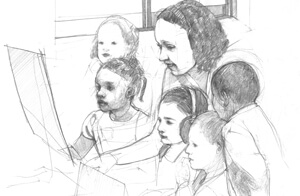Collaboration and Strategic Restructuring: A Retrospective
In reflecting on the past year and thinking ahead about where collaborative strategies will take nonprofits next, we looked at 50 of our most recent consulting engagements that focused on some form of partnership to see what lessons they might yield. What we found is that while there is still (and will likely always be) the need for resources and supports for organizations just starting from square one in working collaboratively, the sector as a whole is evolving in how it forms and benefits from partnerships, moving beyond traditional models of collaboration to a kind of “Collaboration 2.0.”
Over the past year or so, we have seen:
The most diverse range of clients and projects to date — Collaboration and strategic restructuring have become more mainstream and are increasingly embraced by a variety of organizations across the nonprofit sector. We have worked with nonprofits in the arts, health and human services, education, and the environment as well as more generally-focused philanthropic organizations; there is great diversity in size (from the very small to the very large), geographic scope (from local to national), and location (from Alaska to Florida). While each client and situation is unique, we have observed that organizations from specific subsectors share similar cultural tendencies and concerns related to industry-specific external forces — both of which can influence their path to partnership.
Better understanding that “it’s not all about mergers” — The organizations with which we work are expressing interest in a broader array of potential partnerships, signaling a growing appreciation that merger is just one among a continuum of strategic options. (In fact, only about half of our sample set of engagements centered on a potential or completed merger.) Although we literally “wrote the book” on nonprofit mergers, we never enter into a consulting engagement as though merger is a foregone conclusion. It is through the process of working with clients that we are able to help them articulate their needs and motivations and determine what kind of partnership — if any — is likely to help them achieve their goals.
More strength-based alliances — Collaboration 2.0 means we are seeing fewer “rescue” scenarios where a partnership is sought to save an organization in crisis. Instead, we are helping to form more partnerships born of a sense of opportunity for already effective organizations to become even more impactful together. For example, Satellite Housing and Affordable Housing Associates were both on growth trajectories supporting affordable housing in the San Francisco Bay Area when they opted to join forces in a merger to become Satellite Affordable Housing Associates.
Partnerships used to scale promising solutions — Strategic alliances have proven effective in matching a small but state-of-the-art program with a more robust organizational infrastructure to support it in achieving a broader impact. Our work with AARP Experience Corps is a compelling case study for this, and we look forward to sharing at least one similar example in the coming year.
Mergers initiated by leadership turnover — In an increasingly fluid environment where many nonprofit executives are changing positions, leaving the sector, and/or nearing retirement, their organizations are freed to think more broadly about the options for moving forward. Sometimes this means hiring a new leader — or it can also mean (as in the case of Satellite Affordable Housing Associates, above) pursuing a merger.
Cross-disciplinary approaches to achieving impact — Beyond like organizations partnering with one another, we are seeing more cross-disciplinary alliances among nonprofits that perceive the opportunity to enhance services to clients and/or elevate their advocacy role by bringing together related issues under a common organizational structure. Recent examples include the closer integration of substance abuse and mental health services (a trend we expect to see play out nationwide with the implementation of the Affordable Care Act) and alliances among domestic violence organizations and providers of related services.
Although these observations are anecdotal in nature and do not capture the full scope of nonprofit partnerships, we hope that they may yet be instructive in some small way. Unfortunately, other than mergers (which are filed at the state level), the prevalence and character of collaborative strategies is not easily tracked, leading to a dearth in hard data to inform the field. This is an area ripe for research as Collaboration 2.0 continues to evolve as a strategy for social impact.


Comment section